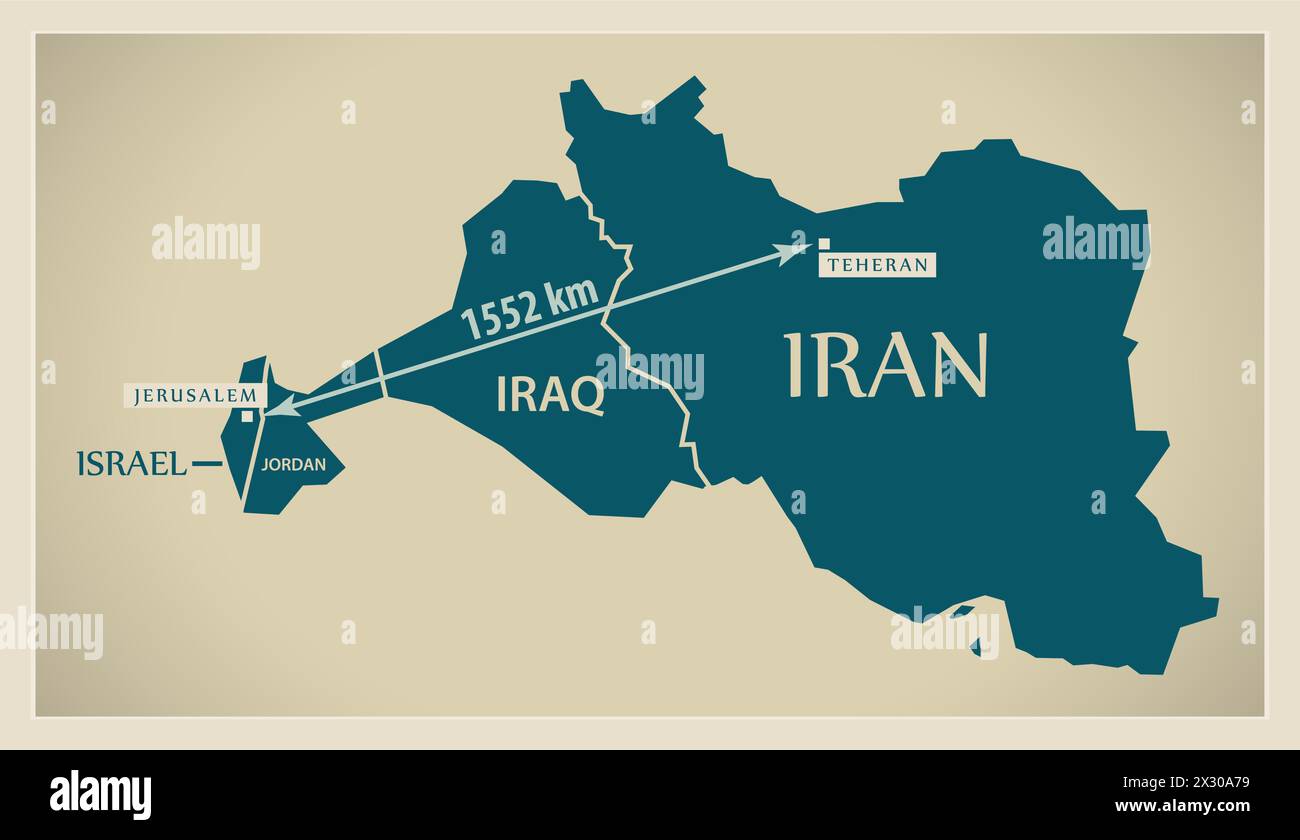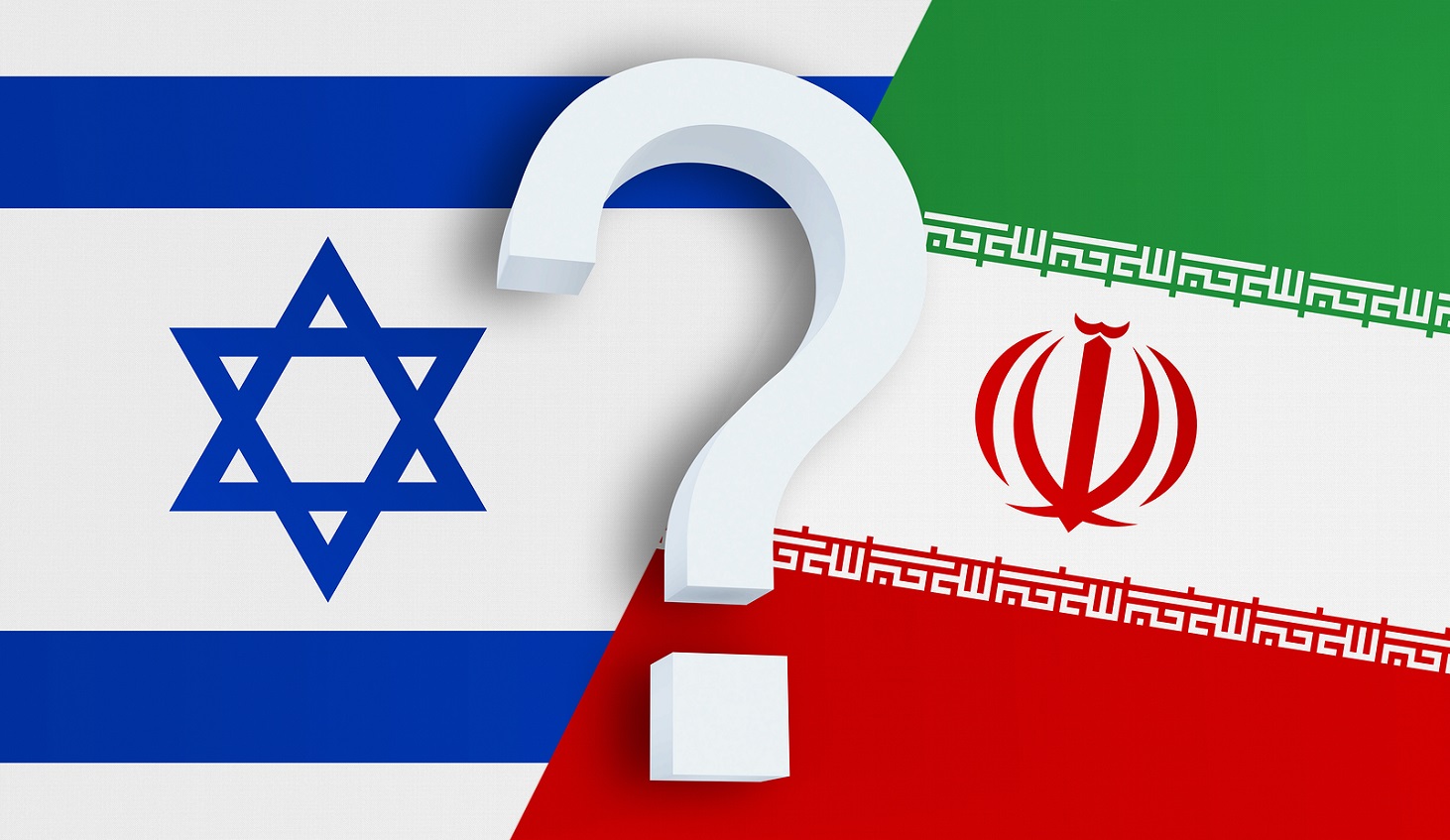Iran-Israel Air Distance: Unveiling The Geopolitical Gap
In a world increasingly interconnected yet frequently marked by geopolitical tensions, understanding the geographical realities between nations becomes paramount. When we talk about the Middle East, the relationship between Iran and Israel often comes to the forefront of international discourse. While political rhetoric and historical narratives frequently dominate the headlines, a fundamental aspect that underpins strategic considerations is the sheer physical separation between these two nations. This article delves into the precise distance between Iran and Israel air distance, exploring not just the raw kilometers but also the multifaceted implications of this geographical gap on regional dynamics and global affairs.
The concept of "air distance" is more than just a number on a map; it represents the shortest possible path an aircraft could take, unhindered by terrestrial obstacles or political boundaries. However, in the complex airspace of the Middle East, such an unhindled path is often a theoretical ideal. From the bustling metropolises of Tehran and Tel Aviv to the strategic military installations scattered across both countries, the air distance is a critical factor in understanding logistical challenges, defense strategies, and even potential diplomatic avenues. Join us as we navigate the skies, calculating the true separation and unraveling its deeper significance.
Table of Contents
- The Geopolitical Landscape: Why Air Distance Matters
- Calculating the Air Distance Between Iran and Israel: A Technical Overview
- Understanding "Air Line" vs. Practical Flight Paths
- Factors Influencing Actual Flight Routes
- Historical Context and Regional Airspace Dynamics
- The Strategic Implications of Air Distance
- Technological Advancements and Their Impact on Air Travel
- Beyond Kilometers: The Broader Significance of Proximity
The Geopolitical Landscape: Why Air Distance Matters
The Middle East is a region characterized by its complex web of alliances, rivalries, and historical grievances. Within this intricate tapestry, the relationship between Iran and Israel stands out as one of the most significant and volatile. While their borders do not directly touch, the perceived proximity and the strategic implications of their geographical separation are constant points of discussion in international relations. Understanding the precise distance between Iran and Israel air distance is not merely an academic exercise; it's a crucial component in analyzing military capabilities, assessing potential threats, and even forecasting diplomatic maneuvers. This geographical fact shapes perceptions of vulnerability and influence, affecting everything from defense budgets to international mediation efforts. The air distance dictates the feasibility and cost of air operations, the reach of missile systems, and the logistics of humanitarian aid, should it ever be required. Therefore, any serious discussion about the future of the Middle East must begin with a clear understanding of this fundamental geographical reality.Calculating the Air Distance Between Iran and Israel: A Technical Overview
When we speak of "air distance," we are generally referring to the great circle distance – the shortest distance between two points on the surface of a sphere (or, in this case, the Earth). This is the path an aircraft would take if it could fly directly over all obstacles and through all airspaces. For the purpose of determining the distance between Iran and Israel air distance, we typically consider the approximate distance between their respective capital cities or major strategic points. For instance, the approximate air distance from Tehran, Iran, to Tel Aviv, Israel, is roughly **1,500 to 1,600 kilometers (approximately 930 to 995 miles)**. This figure can vary slightly depending on the exact coordinates chosen for the start and end points within each country. For example, a calculation from a western Iranian city like Kermanshah to a more eastern Israeli city like Jerusalem might yield a slightly shorter distance, while a calculation from eastern Iran to western Israel might be longer. This "as the crow flies" measurement provides the baseline for all further strategic and logistical considerations.The Role of Distance Calculators (e.g., distance.to)
In today's digital age, calculating such distances is remarkably straightforward thanks to online tools. As the "Data Kalimat" suggests, platforms like distance.to are widely recognized for their accuracy and user-friendliness. "Med avståndskalkylatorn distance.to kan du enkelt beräkna avståndet mellan olika platser i världen." This means that with the distance calculator distance.to, you can easily calculate the distance between different places in the world. "Bara ange önskad startpunkt och destination i sökfunktionen så får du kortaste avståndet." Simply enter your desired starting point and destination in the search function, and you will get the shortest distance. These calculators don't just provide a number; "Il fournit aussi un planificateur d'itinéraire, des cartes interactives." They also provide a route planner and interactive maps. This allows users to visualize the "air line" route and understand the geographical context. "Worldwide distance calculator with air line, route planner, travel duration and flight distances." Such tools are invaluable for anyone needing quick, reliable geographical data, whether for academic research, travel planning, or even geopolitical analysis. They can show, for example, "the distance in kilometres between Mecca and Medina and displays the route on an interactive map," or even "the distance from Tokyo to the North Pole, Equator, South Pole and any place in the world," illustrating their global capability. The core functionality remains consistent: "Simply enter any desired location into the search function and you will get the shortest" distance.Understanding "Air Line" vs. Practical Flight Paths
While the "air line" distance provides the theoretical minimum, actual flight paths, whether for commercial or military purposes, rarely follow this direct route. The practical flight path for any aircraft traveling between Iran and Israel would be significantly longer than the calculated distance between Iran and Israel air distance. This discrepancy arises due to a multitude of factors, primarily geopolitical realities and aviation regulations. Commercial flights, for instance, must adhere to established air corridors, avoid prohibited airspaces, and often make detours to bypass areas of conflict or political sensitivity. Given the strained relations between Iran and Israel, direct flights are non-existent, and any travel between the two nations would involve multiple stops and circuitous routes through third countries. For military aircraft, while the direct route might be technically feasible, the political and strategic risks of entering hostile airspace without authorization are immense, making such a direct flight highly improbable in peacetime and extremely perilous in times of conflict. Therefore, the "air line" serves as a benchmark, but the real-world operational distance is a far more complex calculation.Factors Influencing Actual Flight Routes
Several critical factors dictate the actual flight routes taken by aircraft, especially in a region as sensitive as the Middle East. These go far beyond simply connecting two points on a map and profoundly impact the practical distance between Iran and Israel air distance when considering real-world travel. ### Overflight Rights and Restrictions One of the most significant determinants is overflight rights. Countries typically control the airspace above their territory, and permission is required for foreign aircraft to traverse it. In the context of Iran and Israel, neither country grants overflight rights to the other's aircraft, nor do they permit flights that directly connect the two nations. This forces any aircraft traveling between the general vicinity of Iran and Israel to take long detours, often flying over countries like Turkey, Jordan, or even further afield through the Arabian Peninsula, significantly increasing the actual travel distance and time. These restrictions are not just about security; they are powerful political statements, reflecting the lack of diplomatic relations and mutual mistrust. Beyond direct overflight, regional conflicts and political instability also play a role. Airspaces over Syria, Iraq, or Yemen might be deemed unsafe or restricted, forcing even longer detours for international flights. Airlines constantly assess risk, and routes are adjusted daily based on intelligence and NOTAMs (Notices to Airmen) issued by aviation authorities.Historical Context and Regional Airspace Dynamics
The current state of airspace restrictions and flight paths between Iran and Israel is deeply rooted in decades of geopolitical tension. Since the 1979 Iranian Revolution, relations between the two countries have steadily deteriorated, evolving into a proxy conflict across the region. This historical animosity has directly translated into aviation policy. There are no diplomatic ties, and consequently, no direct air links or mutual recognition of airspace. The regional airspace dynamics are also influenced by other major players. Saudi Arabia, Egypt, and Turkey, for example, control significant portions of airspace that would naturally lie on routes between Iran and Israel. Their relationships with both Tehran and Tel Aviv, along with their own strategic interests, influence which flights are permitted through their territories. This creates a complex aerial chessboard where political alliances and rivalries dictate the flow of air traffic, further extending the effective distance between Iran and Israel air distance for any practical journey. The ongoing conflicts in Syria and Yemen, for instance, have also fragmented regional airspace, making direct routes even more challenging and dangerous for civilian and military aircraft alike.The Strategic Implications of Air Distance
Beyond commercial aviation, the air distance between Iran and Israel holds profound strategic implications, particularly in the realm of military planning and defense. This geographical separation is a critical factor in assessing offensive and defensive capabilities, influencing weapon system development, and shaping regional power balances. ### Missile Ranges and Strategic Depth Perhaps the most critical strategic implication of the air distance is its direct relevance to missile ranges. Both Iran and Israel possess sophisticated missile arsenals. The "air line" distance of approximately 1,500-1,600 km is well within the range of many ballistic missiles developed by both nations. This means that direct strikes are theoretically possible, even without overflying third countries. This capability creates a concept known as "strategic depth" – the ability of a nation to absorb a first strike and still retaliate, or to project power without immediate border proximity. For both Iran and Israel, this distance implies a certain level of mutual vulnerability, driving their respective deterrence strategies. It influences the development of long-range precision-guided munitions and advanced air defense systems, as each side seeks to counter the other's capabilities across this geographical gap. Furthermore, the distance impacts the feasibility of air-launched attacks, requiring aerial refueling capabilities or longer-range strike aircraft. It also dictates the time available for warning and interception, making early warning systems and rapid response capabilities paramount for both nations.Technological Advancements and Their Impact on Air Travel
Technological advancements have continuously reshaped the concept of air distance, making what was once a formidable barrier more traversable. From more fuel-efficient engines to advanced navigation systems, modern aviation technology can reduce travel times and increase payload capacities, effectively "shrinking" geographical distances. For the distance between Iran and Israel air distance, these advancements mean that the theoretical range of aircraft and missiles continues to grow, even if political barriers remain. Improved satellite navigation (GPS, GLONASS, Galileo) allows for more precise flight planning and execution, potentially optimizing routes where politically permissible. Advances in stealth technology and electronic warfare also play a role in military aviation, potentially enabling aircraft to traverse contested airspaces with reduced risk, although this remains highly sensitive and speculative in the context of direct confrontation. ### Civilian vs. Military Air Travel Considerations It's crucial to differentiate between civilian and military air travel when discussing the impact of distance. Civilian aviation prioritizes safety, efficiency, and adherence to international regulations, often resulting in longer, more circuitous routes to avoid political hot zones or comply with overflight restrictions. The "Worldwide distance calculator with air line, route planner, travel duration and flight distances" tools are primarily designed for civilian travel, providing the most efficient *legal* path. Military air travel, on the other hand, operates under different rules of engagement and strategic imperatives. While they also consider fuel efficiency and range, military planners prioritize mission objectives, stealth, and evasion. For military aircraft, the "air line" distance becomes more relevant as a theoretical minimum for strike missions, though the actual operational route would still be heavily influenced by threat assessments, enemy air defenses, and tactical considerations. The ability to cover the distance between Iran and Israel air distance quickly and effectively is a core component of military readiness for both nations.Beyond Kilometers: The Broader Significance of Proximity
While the precise distance between Iran and Israel air distance is a quantifiable metric, its true significance extends far beyond mere kilometers. This geographical separation, or lack thereof, shapes perceptions, influences strategic doctrines, and contributes to the overall geopolitical temperature of the Middle East. It underscores a reality where two ideologically opposed states exist within striking distance of each other, necessitating constant vigilance and strategic calculation. The concept of "proximity" in this context is less about direct borders and more about the reach of influence and power projection. The air distance means that both nations are within each other's sphere of strategic concern, leading to a complex interplay of deterrence, proxy conflicts, and technological arms races. It highlights the importance of regional stability, as any escalation could quickly bridge this air gap. Understanding this distance is a prerequisite for comprehending the dynamics of the region and for any efforts towards de-escalation or future peace. It reminds us that even without shared borders, the air links nations in ways that can be both connecting and profoundly dividing.Conclusion
The distance between Iran and Israel air distance, approximately 1,500 to 1,600 kilometers, is more than just a geographical measurement; it is a critical parameter in the complex geopolitical equation of the Middle East. While online tools like distance.to can effortlessly calculate this "as the crow flies" measurement, the practical realities of air travel, shaped by political tensions, overflight restrictions, and strategic considerations, mean that actual flight paths are significantly longer and more intricate. This air distance profoundly impacts military planning, influencing missile ranges, strategic depth, and the development of advanced defense systems. It underscores the mutual vulnerability and the need for robust deterrence strategies on both sides. Beyond the technical aspects, this geographical reality defines a significant portion of the strategic landscape in the region, influencing alliances, rivalries, and the ongoing quest for stability. We hope this comprehensive exploration has provided you with a clearer understanding of the air distance between Iran and Israel and its far-reaching implications. What are your thoughts on how geographical distances influence geopolitical relations? Share your insights in the comments below, or explore other articles on our site for more in-depth analyses of global dynamics.
Modern Map - Distance between Jerusalem ISRAEL and Teheran IRAN Stock

Israel Iran War: Iran launched a major airstrike on Israel

Increasing threats of a regional conflict between Iran and Israel